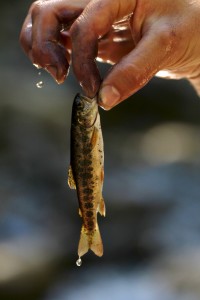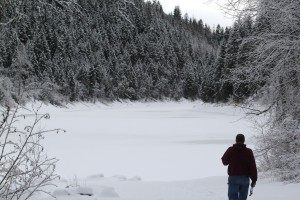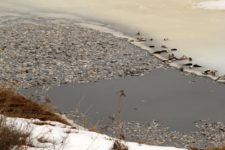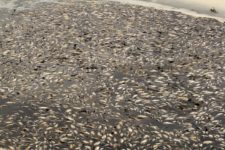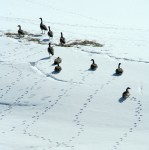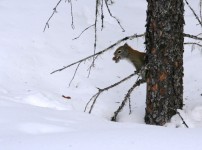Winter brings hardships for many animals–lack of food, deep snow and cold temperatures. For fish sealed from the winter landscape by a ceiling of ice, the biggest battle isn’t food or cold but oxygen.
Fish handle colder water by decreasing their activity level which in turn decreases their need for food. By the end of winter, food might be sparse but fish decrease their activity level even more to cope. However, fish cannot cope with running out of oxygen.
Fish use their gills to obtain oxygen from the water much like people use their lungs to obtain oxygen from the air. The oxygen in water is dissolved like carbonation in soda but with smaller bubbles.
When a lake isn’t capped with ice, oxygen becomes dissolved in the water through turbulence by wave action, waterfalls, rapids, riffles and currents. Oxygen is also released into water by photosynthesis from aquatic plants.
Once a lake is capped with ice, the lake becomes a closed system. There are no waves to mix in oxygen. The only way oxygen is added is through photosynthesis if the ice isn’t covered with snow.
If snow blankets the ice, aquatic plants can’t photosynthesize and sometimes will die because of the lack of sunlight. When a plant dies, it begins to decompose and the process of decomposing utilizes oxygen–the same oxygen fish need to survive.
Even though cold water can hold more dissolved oxygen than warm water, fish will decrease their respiration rates in winter to survive. Unless aquatic plants are able to photosynthesize, the finite amount of oxygen has to be shared by all the fish and aquatic organisms in the lake for the entire winter.
Some fish can tolerate low levels of oxygen better than others. Bass, trout and blue gills tolerate low levels of oxygen the least because they require high levels of dissolved oxygen. Northern pike, crappies and yellow perch have more tolerance for low oxygen levels. Fathead minnows and bullheads can handle low oxygen levels better than most fish.
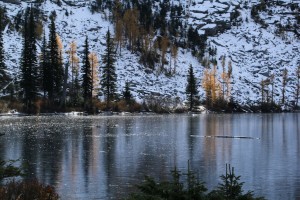
The first ice on Roman Nose Lake in mid-October begins a long winter for the fish living below the icy ceiling
If all the oxygen is depleted from a lake, no fish can survive. Fish dying due to lack of oxygen in the winter is called winterkill.
Fish survive the nearly six months of lake ice in some locations by conserving energy through decreased activity, lower metabolic rates and lower respiration rates. With decreased metabolism and activity, digestion slows considerably. Food digested in 24 hours in the summer may take an entire week to digest in the winter.
Some fish spend the winter in a state of dormancy by moving to the bottom of lakes and seeking shelter under logs, rocks or fallen leaves. A few fish, like carp, go into diapause which is a suspended state with an extremely slow heart rate.
Cold-loving fish, such as lake trout, whitefish and brown trout, remain fairly active in winter. They tend to venture into new range in the winter that is often too warm and oxygen-poor in the summer, often because it is shallow.
Each species of fish is different on how it adapts to life below an icy ceiling for several months every year and sometimes the thawing lake edges cannot come soon enough.

